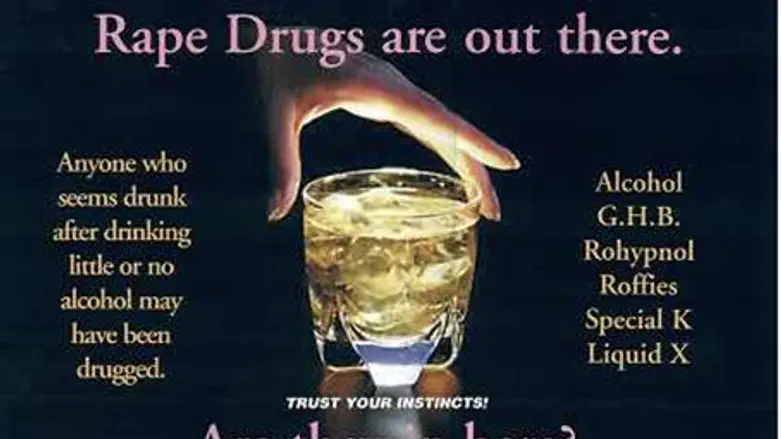
Researchers at Tel Aviv University have developed a 100-percent accurate personal sensor that detects the presence of the most common date rape drugs in beverages.
The next stage is to miniaturize the system for mass production and to produce a device no larger than the head of a pin, which would make it possible for club-goers to check their drinks without their partners noticing.
Prof. Fernando Patolsky and Dr. Michael Ioffe of the School of Chemistry developed the system that is based on optical signal changes. When a ray of light comes into contact with a beverage spiked with a date rape drug, a signal change occurs and the system alerts the user.
According to its developers, the system identifies with 100 percent accuracy, without any false positives, the presence of harmful quantities of the most commonly used date rape drug, GHB, and of the second-most commonly used drug, ketamine.
Patolsky and Ioffe were aided in their research by bartenders who mixed 15 popular cocktails for them.
Blind testing was then carried out: 50 drinks were randomly spiked with date rape drugs, with the researchers unaware of which glasses contained the drugs. In the experiment, the system detected the drugs with 100 percent accuracy in all of the spiked drinks.
Date rape drugs, also known as club drugs, are psychoactive substances: drugs and medications with sedative and/or amnesiac effects that facilitate sexual exploitation. Most victims are teens and young adults at trance parties, clubs and bars.
Drug-facilitated sexual assault is a growing problem the world over. According to data published by the U.S. Department of Justice, in 2007 some 200,000 women were raped in the United States alone with the aid of date rape drugs. Only 16 percent of the victims reported the incidents to the authorities.
Experts believe that the current prevalence of date rape is up to twice the figure cited above, encompassing half a million women.
In addition to their use in sexual assault, these drugs can be employed to stun and sedate victims in other kinds of criminal acts, such as robbery.
“Currently the system is geared toward detecting GHB and ketamine, and we are hoping to expand the system so that it will detect additional date rape drugs as well,” Dr. Ioffe says.
Up to now the police and the health authorities have had no means of detecting date rape drugs in real time. The researchers note that law enforcement agencies have been unable to contend with the phenomenon because up to now no device has been developed that is sufficiently sensitive, let alone capable of being activated in pubs, in real time. Moreover, these drugs become undetectable by testing after several hours, making their use impossible to verify once victims regain consciousness.